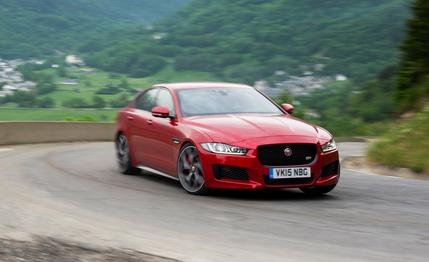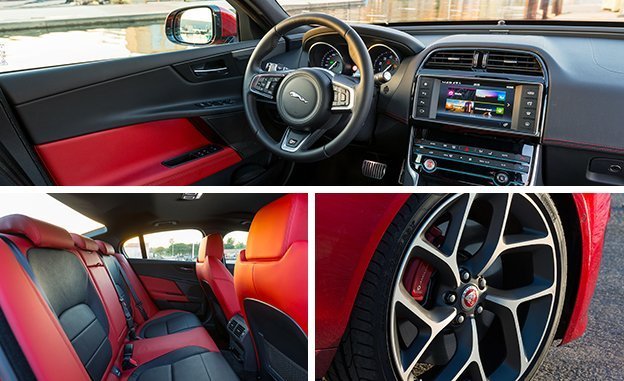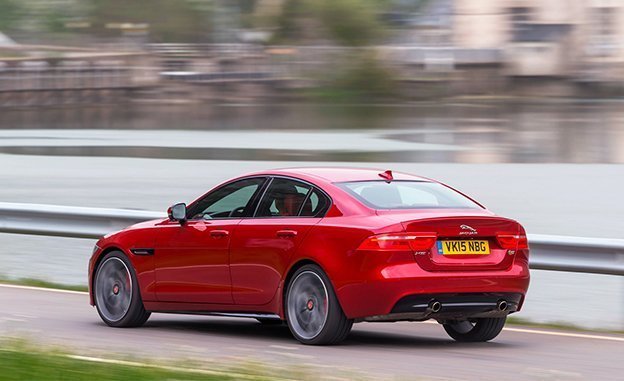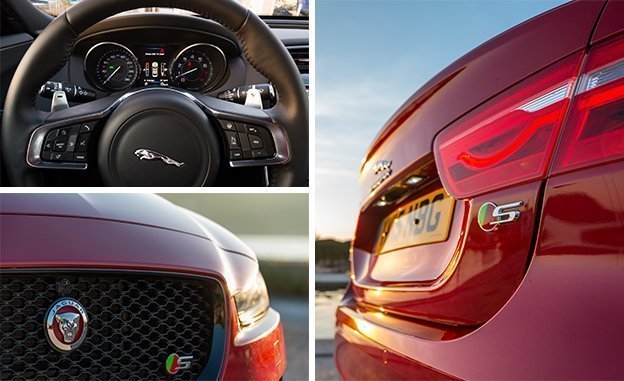
 Instrumented Test
From the August 2015 issue
Instrumented Test
From the August 2015 issue
Jon Darlington, engineering manager for the Jaguar XE, describes Tata Motors as the perfect parent, always willing to give its children a loan yet never so meddlesome as to dictate how the money is spent. The F-type may have been a rash, indulgent way to spend dad’s money, but it became the brand’s modern icon. Now, Jaguar appears focused on sensible spending. This new sports sedan ushers in Jaguar’s new aluminum-intensive architecture, which will also spawn a fresh XF four-door and the F-Pace crossover, creating a trifecta of new vehicles where luxury sales are thick on the ground.
And with it, Jaguar gets a cohesive look for the whole lineup. If you find the XE attractive but not eye-catching, that’s fine by the designers. Ian Callum’s team fussed over proportions rather than character lines, graphics, and details. Going forward, though, Jaguar may face the same challenge that Audi does today: How do you make a car so clean and restrained and familial seem fresh after it’s been on sale for three years?

 The new infotainment system is still iPad-infatuated; needs more physical buttons. The
car itself, though, is a paean to physicality.
The new infotainment system is still iPad-infatuated; needs more physical buttons. The
car itself, though, is a paean to physicality.
The XE won’t exactly be fresh when it finally arrives at U.S. dealerships in early 2016. European-market cars are already flowing out of Solihull from the longtime Land Rover facility that, with the addition of the XE, is now turning out two-wheel-drive vehicles for the first time in 34 years. North American execs, hoping to give the XE every opportunity for success, won’t import it until the four-wheel-drive models are rolling off the line. Even then, we’ll have to wait an additional six months for what will surely be the most popular engine, an all-new gasoline four-cylinder. At the outset, American buyers will only have the option of a 180-hp diesel or the driver’s choice, the supercharged, 340-hp V-6–equipped Jaguar XE S that we drove.
Weighing 3787 pounds, our XE S lands in line with the steel-intensive BMW 335i, making all this fuss about aluminum a bit of a mystery. Strategically placed steel aft of the rear-passenger footwells helps balance the weight distribution when there’s a gas or diesel four-cylinder up front. With the six-cylinder, though, that’s not quite enough, and the car carries its weight split 52.6/47.4 percent, front to rear.
It doesn’t help that the supercharged V-6 starts with a plus-sized block. Pop the hood and it’s obvious that this engine stretches longer than a typical V-6. Jaguar made this decision so that vehicles offering both the 3.0-liter six and 5.0-liter eight-cylinder engines, such as the F-type and the Range Rover, can use common engine-mount locations.


A little extra fat doesn’t keep the XE S from hustling, though. The Eaton supercharger feeds up to 11.6 psi of air into the cylinders to squeeze 340 horsepower and 332 pound-feet of torque from 3.0 liters of displacement. With an almost Porsche-like mechanical rasp, the six-cylinder provides immediate thrust off the line that builds progressively, and the torque remains on ready standby while cruising. For the quickest acceleration, simply stab the throttle from a stop. The XE lunges to 60 mph in 4.5 seconds and steams through the quarter-mile in 13.1 seconds at 106 mph. Those figures are near the front of the class even without the assistance of four-wheel drive or computer-modulated launch control.
While the XE outruns a BMW 335i from a standing start, the Jag gives up four-tenths of a second in both our 30-to-50 and 50-to-70-mph passing tests, which are conducted with the transmission in its standard mode. The sensations and sounds from the driver’s seat suggest that the XE gives up all that time during the initial downshift. When pressed to kick down three, four, or five cogs at a time, the torque converter slurs the shifts in a manner that’s uncharacteristic of the acclaimed ZF eight-speed gearbox.


To get around early upshifts and reluctant downshifts, the transmission’s sport mode quickly became our default choice. Too bad it locks out eighth gear, because in every other aspect, Jag calibrated the sport mode to our sense of normal.
The chassis honors the mantra of Sir William Lyons—grace, pace, and space—with its crisp responses and refined manners. These are long-standing Jaguar strengths, made even more adroit with the two-mode electronically adjustable dampers that are standard on the S model. At an elevated clip, the XE smooths pavement and straightens corners with its suppleness and precision. Shod with the stickiest rubber on the menu—20-inch Pirelli P Zeros—the XE S recorded 0.96 g of lateral grip and stopped from 70 mph in 151 feet, well ahead of anything we’ve measured from its competition.